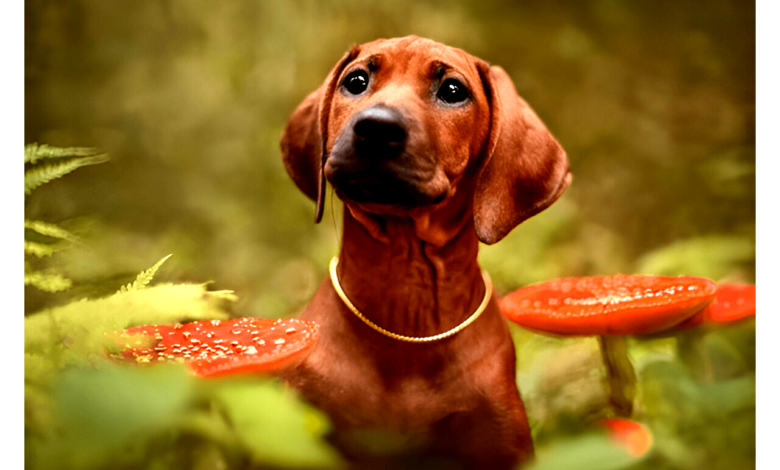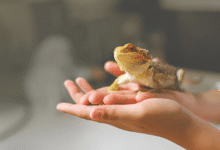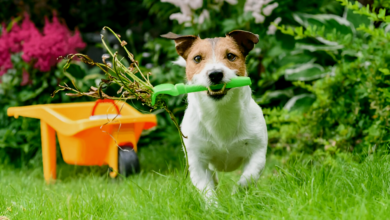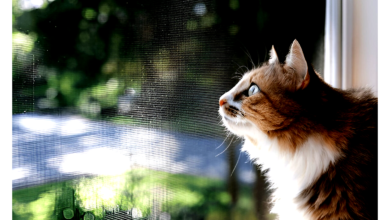
Poisonous Plants for Pets in the UK: What to Watch Out For
Poisonous plants for pets in the UK pose a significant risk to the health and well-being of cats, dogs, and other domestic animals
Poisonous plants for pets in the UK pose a significant risk to the health and well-being of cats, dogs, and other domestic animals. Many common garden and household plants contain toxins that can cause mild to severe reactions in pets if ingested or even touched. Pet owners, especially those who allow their furry friends to roam freely indoors and outdoors, must be aware of these hazards to create a safe environment. Whether you have a garden filled with flowers or houseplants decorating your home, knowing which plants are toxic can help prevent unnecessary illness and even fatal consequences for your pets.
The UK is home to various plants that can be dangerous to pets, ranging from ornamental flowers to wild-growing vegetation. Some of these plants can cause mild digestive upset, while others may lead to severe poisoning, affecting the heart, kidneys, or nervous system. As responsible pet owners, it is crucial to recognize the symptoms of plant poisoning, understand which plants to avoid, and take immediate action if your pet is exposed. This article will provide an in-depth guide to the most common poisonous plants for pets in the UK, their potential effects, and what to do in case of an emergency.
Common Poisonous Plants for Pets in the UK
Lilies are among the most dangerous plants for cats. Even a small amount of pollen, water from a vase, or a pet brushing against the plant and grooming itself can lead to severe kidney failure in cats. While dogs are less sensitive to lilies, ingestion can still cause gastrointestinal distress. Pet owners should avoid having lilies in their homes and gardens to prevent accidental exposure.
Foxglove is a common plant found in UK gardens and the wild, but it contains digitalis, a toxin that affects the heart. If ingested by pets, it can cause symptoms such as drooling, vomiting, diarrhea, irregular heartbeat, and even death. Due to its widespread presence, pet owners should be extra cautious when walking their dogs in rural or wooded areas.
Daffodils are a staple of UK gardens and parks, but they contain lycorine, a toxin that can cause severe gastrointestinal issues in pets. Ingesting any part of the plant, especially the bulbs, can lead to vomiting, diarrhea, lethargy, and even tremors or seizures in severe cases. Dogs are particularly at risk, as they may dig up and chew on daffodil bulbs.
Rhododendrons and azaleas contain grayanotoxins, which can cause serious health problems in pets. Symptoms of poisoning include excessive drooling, vomiting, diarrhea, weakness, and, in severe cases, heart failure or coma. Rhododendrons and azaleas are commonly found in UK gardens and parks, making them a hidden danger for pets that roam freely outdoors.
Yew trees and shrubs are highly toxic to pets and humans alike. The entire plant, including the leaves and berries, contains toxic alkaloids that can cause severe cardiac issues, difficulty breathing, tremors, and sudden death. Even small amounts of yew ingestion can be fatal, making it crucial for pet owners to keep their animals away from these trees.
While aloe vera is well-known for its medicinal properties for humans, it is toxic to pets if ingested. The plant contains saponins and anthraquinones, which can cause vomiting, diarrhea, and lethargy in cats and dogs. Many pet owners keep aloe vera plants indoors, making it essential to place them out of reach of curious pets.
Tulips and hyacinths belong to the lily family and contain toxic alkaloids, particularly in their bulbs. If ingested, these plants can cause drooling, nausea, vomiting, and diarrhea. In severe cases, ingestion can lead to heart abnormalities or respiratory distress. Since these flowers are common in UK gardens, pet owners must supervise their pets and prevent them from digging in flower beds.
Oleander is an attractive yet deadly plant for pets. Every part of the plant is highly toxic and can cause severe symptoms, including vomiting, decreased heart rate, tremors, and even death. Though less common in the UK compared to Mediterranean regions, oleander is sometimes found in ornamental gardens and should be kept out of reach of pets.
Chrysanthemums contain pyrethrins, a natural insecticide that can be harmful to pets. Ingesting the plant can cause drooling, vomiting, diarrhea, and loss of coordination. While not usually fatal, the symptoms can be distressing for pets, and owners should take precautions when planting chrysanthemums in their gardens.
Autumn crocus contains colchicine, a potent toxin that can cause severe vomiting, diarrhea, kidney and liver damage, and even respiratory failure. The symptoms may not appear immediately, making it more dangerous as internal damage may already be occurring. Autumn crocus grows in many UK gardens, making it important for pet owners to identify and remove this hazardous plant.
Signs of Plant Poisoning in Pets
Pet owners should be vigilant about symptoms that may indicate plant poisoning. Common signs include excessive drooling, vomiting, diarrhea, lethargy, weakness, loss of appetite, tremors or seizures, difficulty breathing, and irregular heartbeat. If you suspect your pet has ingested a toxic plant, seek veterinary attention immediately.
What to Do If Your Pet Is Poisoned
If your pet has ingested a toxic plant, remove any plant material from their mouth to prevent further ingestion. Identify the plant and take a sample or a photo for the vet. Contact your veterinarian immediately and describe the symptoms. Do not induce vomiting unless advised by a vet, as some toxins can cause more harm when regurgitated. Follow the vet’s instructions for treatment and monitoring.
Preventing Plant Poisoning in Pets
To reduce the risk of plant poisoning, research plants before introducing them to your home or garden. Place toxic plants out of reach of pets and supervise them when outdoors, especially in public parks or gardens. Train pets to avoid chewing on plants and keep emergency vet contacts readily available.
Read More: Pet Emergency Care: When to Visit a Vet in the UK
Conclusion
Awareness of toxic plants is crucial for keeping pets safe in the UK. Many commonly found plants can pose serious health risks, making it essential for pet owners to be informed and cautious. Recognizing symptoms of poisoning and acting quickly can make a significant difference in a pet’s health and survival. By creating a pet-friendly environment and avoiding hazardous plants, owners can ensure their furry companions remain safe and healthy.
Understanding and prevention are key, and with careful planning, pet owners can enjoy their gardens and homes without unnecessary risks to their beloved animals.
FAQs
1. What should I do if my pet eats a poisonous plant?
If your pet ingests a toxic plant, remove any plant material from their mouth and contact a veterinarian immediately. Do not induce vomiting unless instructed by the vet, and bring a sample or photo of the plant for identification.
2. How can I prevent my pet from eating toxic plants?
Keep toxic plants out of reach, supervise pets in the garden, and train them to avoid chewing on plants. You can also use pet-safe deterrents and ensure your home and yard are free of hazardous vegetation.
3. Are all lilies toxic to pets?
Yes, all lilies are extremely toxic to cats and can cause kidney failure. While dogs are less affected, they can still experience gastrointestinal issues if they ingest lilies.
4. How quickly do symptoms appear after plant poisoning?
Symptoms can appear within minutes to a few hours, depending on the type of plant and amount ingested. Some toxins may have delayed effects, causing internal damage before symptoms become evident.
5. Are there pet-safe alternatives to common toxic plants?
Yes, many non-toxic plants are safe for pets, including spider plants, areca palms, and Boston ferns. Always research plants before introducing them into your home or garden.







